Utilizing a stirrup bender: Merging Stirrups.
11-04-2022 12:00
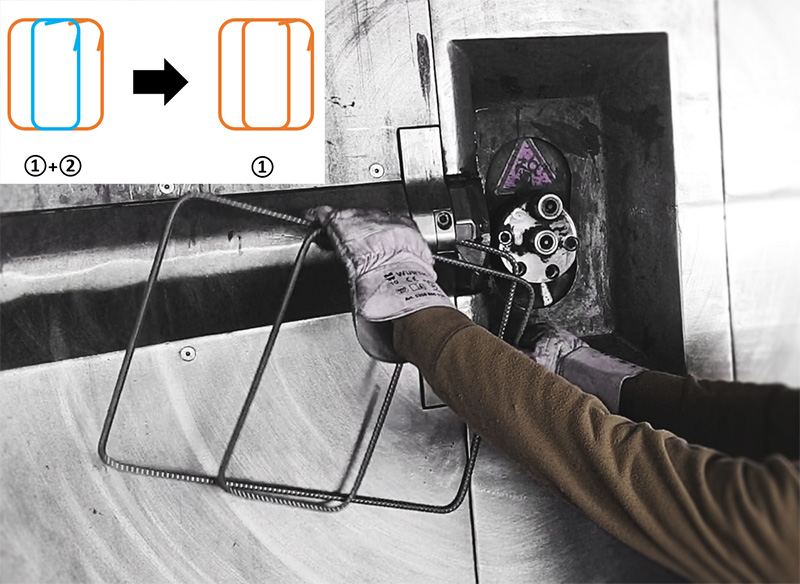
An automated stirrup bender has been part of every major rebar manufacturer for several years now. But are these stirrup benders always used to their full potential?
Generally, there are a certain number of reasons why the stirrup bender is not used to its full potential.
Firstly, practical applications are often not considered when the reinforcement element is designed. CAD-Software is primarily developed to optimize reinforcement to reduce material costs but mostly, to simplify and standardize the reinforcement in an element.
Secondly, the actual limits and possibilities of the stirrup bender are not known. Modern stirrup benders have far more shaping possibilities than the older examples, but it requires some know-how about the machine to benefit from its capabilities.
Yet, a stirrup bender should be an important machine to improve the overall reinforcement assembly procedure.
A good utilization, for example is to start combining stirrup shapes by efficiently bending separate stirrups/links as a merged stirrup shape.
Advantages can include a radical decrease in the amount of material used on each stirrup, leading to a reduction of material costs.
Additionally, it helps save labour, a welcome advantage when you are trying to address the shortage of skilled workers.
To further introduce the possibilities of the stirrup bender, we look at three examples:
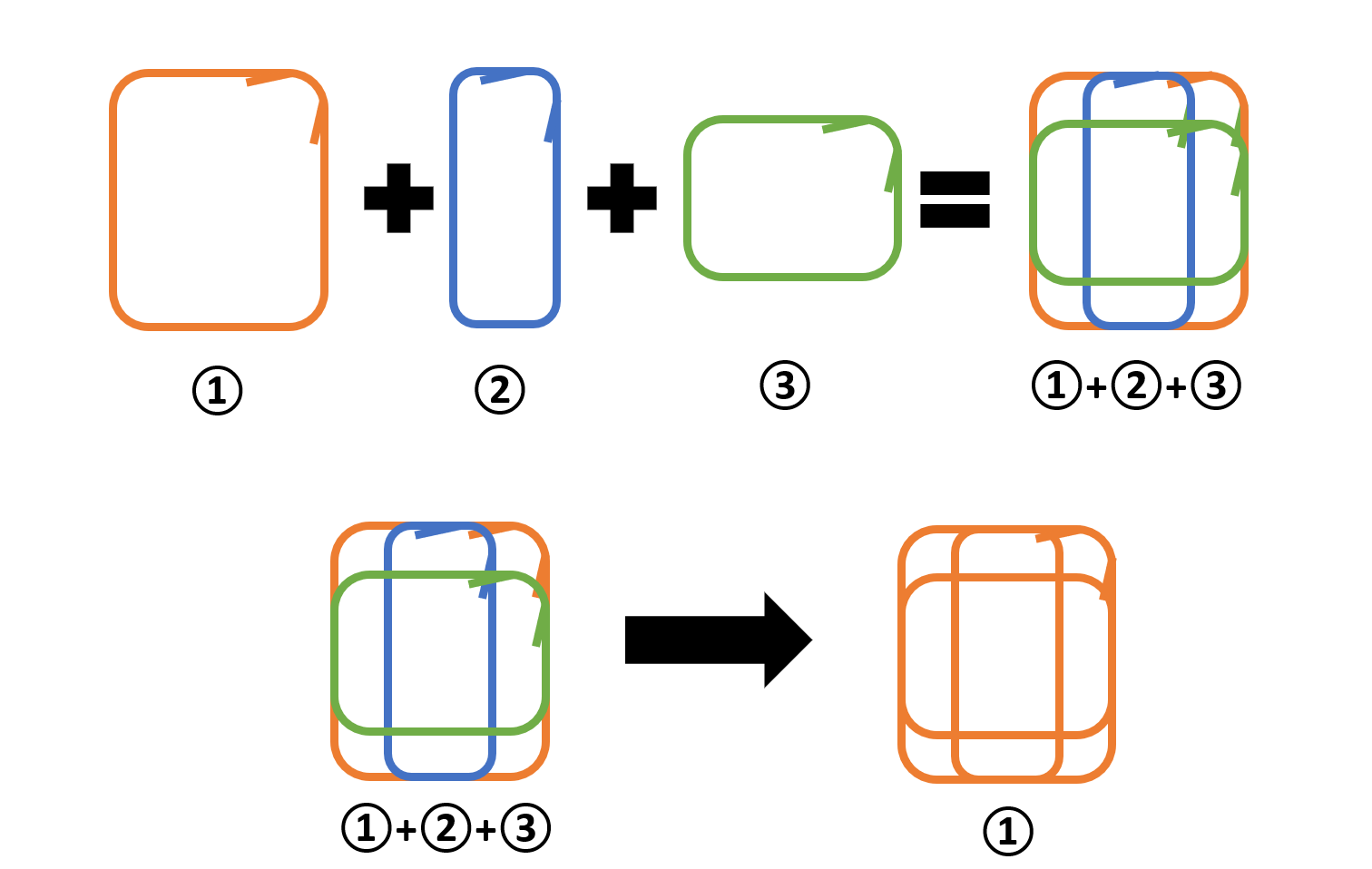
Example 1: Combined Stirrup Shapes for Beams and Columns
Traditionally this particular stirrup shape consists of 3 stirrups. When applied in a column assembly, the choice is often to make up the element out of outer stirrups (in blue) and, in for example half of the total stirrups, manually add the inner stirrups.
Case study: Column made up of 39 single stirrups, and 40 ‘combined’ stirrups.
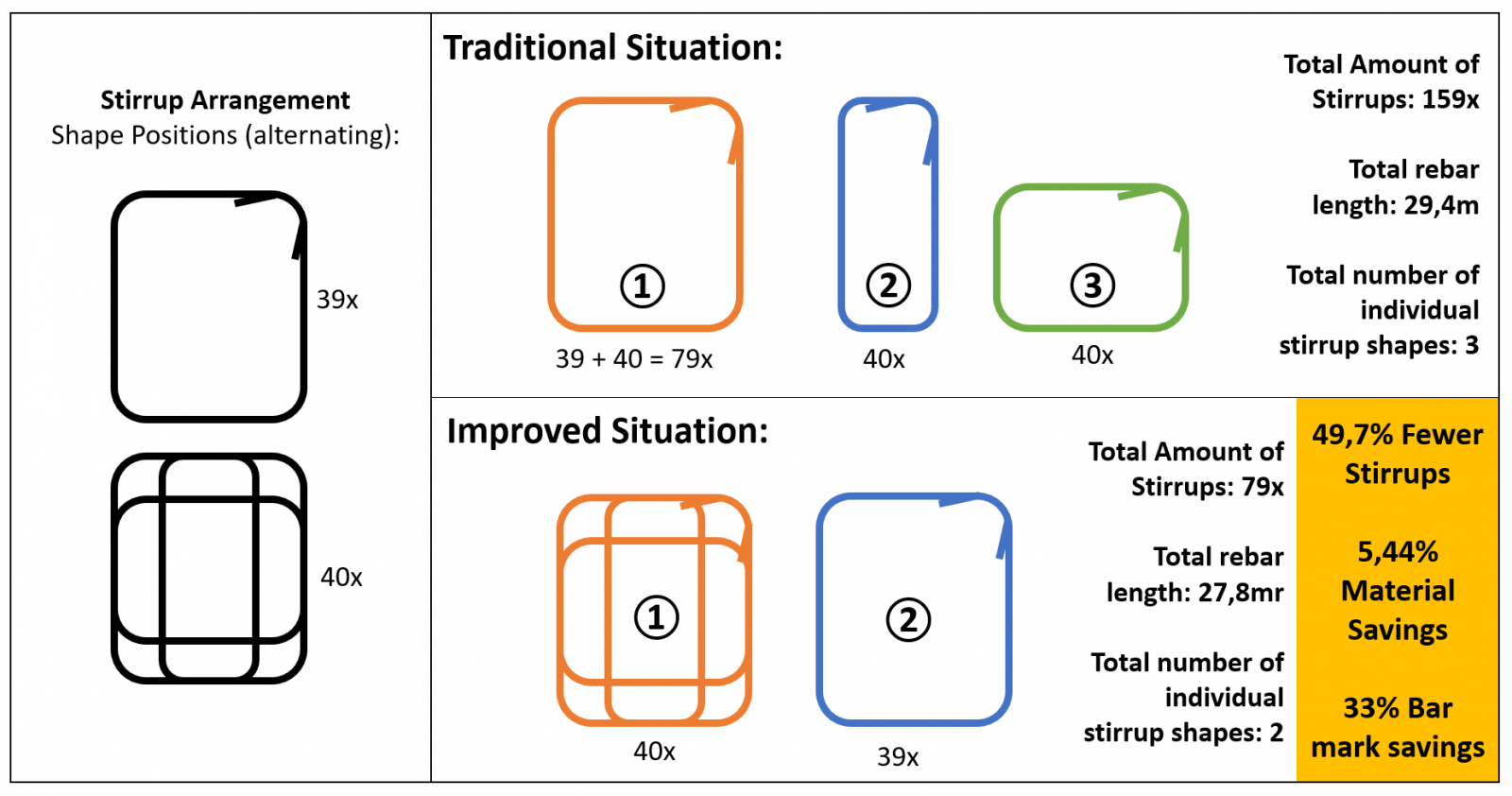
Comparison three loose stirrups vs. combined stirrups
As can be seen in this example, the total amount of stirrups used can be reduced from 159 to 79, simply by bending the combined stirrups as one on your stirrup bender.
Consequently, you will save a significant length of steel because of the reduction in overlapping stirrup ends.
40x 2 inner stirrups x 2 stirrup-endings x 10cm = 1.6 meter material saving
The assembly procedure for an entire column is faster and more user friendly. The workers work with less individual items and require fewer fastening points. The inner stirrups are already in place, which means no awkward assembly procedure where stirrups need to be “opened” to manoeuvre them around the bars.
.png)
Example 2: U-Stirrups for wall and floor edging
As mentioned at the beginning of the article, often material saving is not the most economic goal.
By bending two U-stirrups in one hit, additional material is required. Still, there will be many savings in the organization and assembly process. Fewer stirrups mean fewer logistic steps and fewer stirrups for the worker to identify and process.
In this streamlined assembly procedure, the orientation of the stirrups towards each other are already confined, this means the final element shape will be perfect, as long as the bending is prefect.
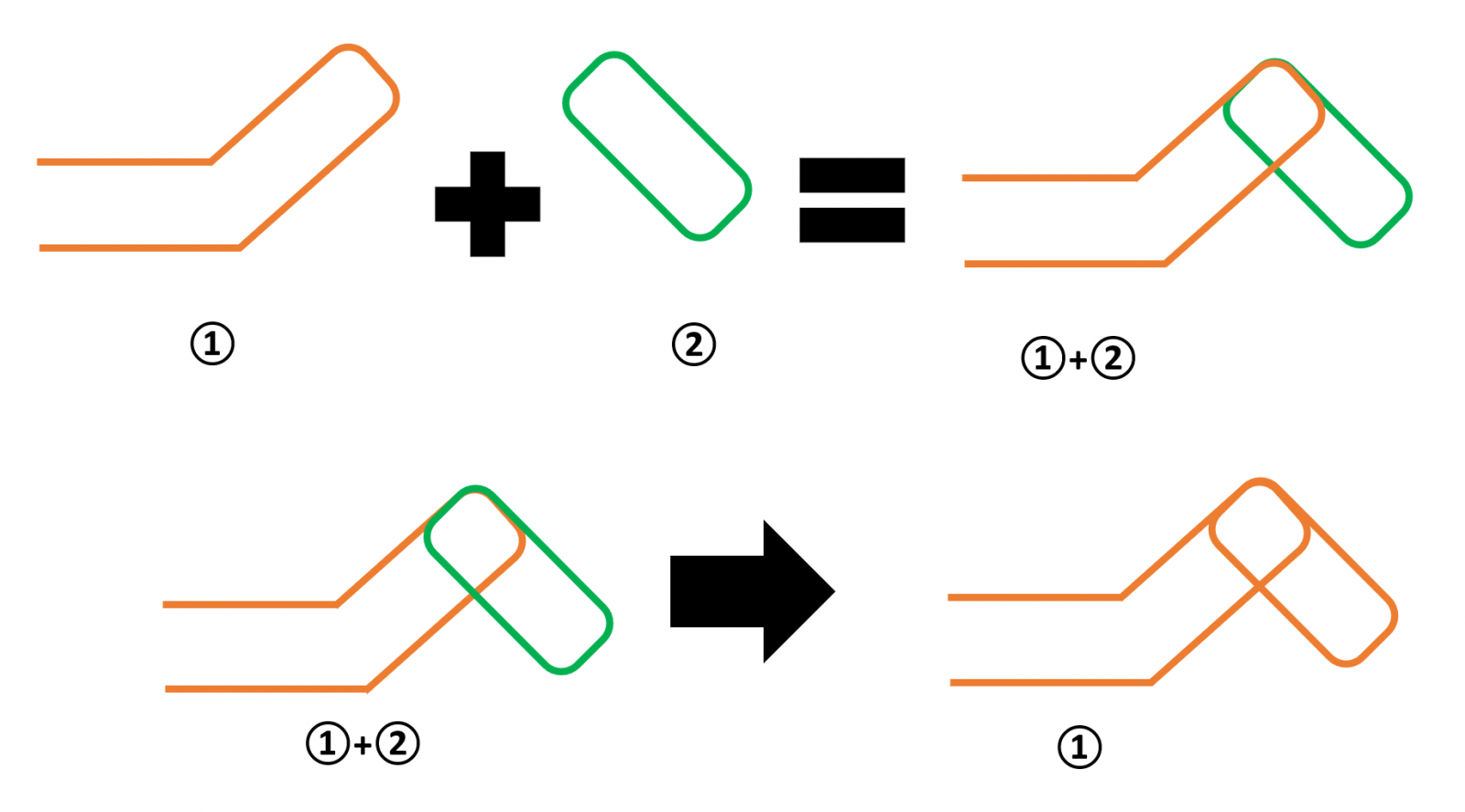
Example 3: The endings of a Staircase
The reinforcement design of staircases can be non-standard. Yet on both endings often many different stirrups are used to make a more complex shape.
In many cases these stirrups can be merged into one stirrup shape. Even if the diameters are not the same, material could be saved too, due to the elimination of the stirrup endings on the square stirrups.
Again, this also saves valuable measuring and assembly time of the steel fixer or welder.

5 Advantages by bending multiple stirrups as a single shape:
- Guaranteeing the overall shape (and consequently the concrete cover)
- Savings in material, often by reducing the link/stirrup closing ends.
- Labour savings, later in the assembly process.
- You have a reduced number of actual rebar items, less organising, fewer logistical movements.
- Fewer mistakes in positioning the inner stirrups in outer stirrups
So why not start testing and trying out the potential of your stirrup bender? Starting, for example by creating new stirrup shape templates.
More examples can be found here
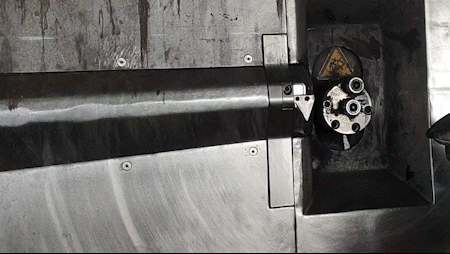
| << | April 2022 | >> | ||||
| Mon | Tue | Wed | Thu | Fri | Sat | Sun |
| 1 | 2 | 3 | ||||
| 4 | 5 | 6 | 7 | 8 | 9 | 10 |
| 11 | 12 | 13 | 14 | 15 | 16 | 17 |
| 18 | 19 | 20 | 21 | 22 | 23 | 24 |
| 25 | 26 | 27 | 28 | 29 | 30 | |
